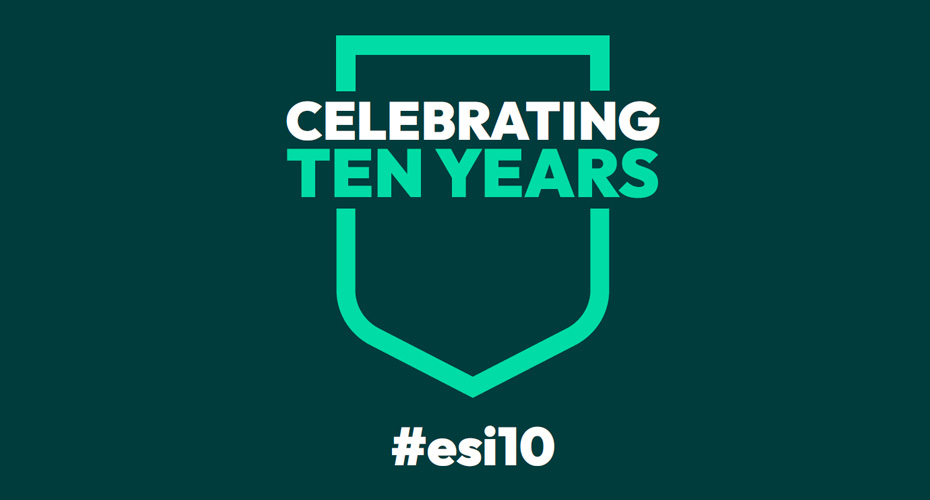Dr Sarah Crowley
We have been catching up with our very first PhD students and Postdoctoral researchers to see what has happened since they joined us a decade ago. Here you can read about their reflections of working at the ESI, information about what they are doing now and we look ahead to their future plans.
More conversations to be added soon!
What were you working on when you first joined the ESI?
I joined the first cohort of students at the ESI as a PhD candidate in September 2013, with Professor Robbie McDonald as my lead supervisor and Prof Stephen Hinchliffe (Geography, Streatham campus) as my second supervisor. My work applies social and interdisciplinary research methods to the sustainable management of domestic and wild animals. My PhD focused on case studies of controversial wildlife management issues, including the reintroduction of beavers, the management of grey squirrels and the eradication of monk parakeets. This research resulted in 6 first-author papers in geography, ecology, and conservation journals. During my PhD I was a member of the EU COST Network ‘ParrotNet’ and contributed to the River Otter Beaver Trial science and evidence forum. I successfully defended my PhD thesis “Ecological Politics and Practices in Introduced Species Management” in July 2017.
What was your proudest achievement?
After my PhD, I successfully managed the high impact, interdisciplinary “Cats, Cat Owners & Wildlife” project funded by the Songbird Survival. We worked with cat owners to understand their views on cat roaming and hunting behaviour and identified novel techniques for reducing cat predation of wildlife. This research produced one of the 5 most popular scientific papers of March 2021 in the Nature Index journals, has been covered by over 600 news articles worldwide on CNN, The Guardian, Science, Daily Mail, Telegraph, Express, India’s News18, HuffPost, ABC, Fox, etc. I was the PhD supervisor for Dr Martina Cecchetti on this project, along with Professor Robbie McDonald. I am particularly proud of this project as it had useful ‘real-world’ application, and allowed us to develop constructive relationships with external stakeholders. Additionally, it gave me a good understanding of the research culture. We also received an ESRC Impact Cultivation Award to help us build a network of key organisations and develop impact.
What happened next – where did you go?
In February 2020, I was appointed as a Lecturer in Human and Animal Geography at the University’s Centre for Geography and Environmental Science. I now teach undergraduate modules in my research area and co-supervise four more PhD students. Since 2017, I have published 32 peer-reviewed articles, with >1200 citations, and have received national and international recognition for my work on the social dimensions of managing introduced and reintroduced species.
Last year, I received NERC Discipline Hopping funding, with Prof McDonald and Dr Angela Cassidy, to develop research focusing on the social challenges of managing deer in UK woodlands. Prof McDonald, Dr Regan Early and I received a grant from Natural England to support the development of a Species Conservation Strategy for hazel dormouse. I am collaborating with the Cawthron Institute on a New Zealand Government funded NZ$17,000,000 project (‘Fish Futures’) on participatory approaches to managing introduced fish, and I am a Co-investigator on the NERC Changing the Environment Programme, “Renewing biodiversity through a people-in-nature approach,” a £10,000,000 project. In July 2022, I was promoted to Senior Lecturer. I also carry out consultancy work on social feasibility of eradication and species translocations and am on Technical Advisory Groups for the Uist Wader Project (NatureScot) and EU LIFE Raft (Rathlin Acting for Tomorrow) project (RSPB).
What was the most useful lesson you learned at the ESI?
I joined the ESI with a diverse cohort of students studying very different things, from renewable energy to phytoplankton, and applying a host of different approaches and ideas. While we were all working towards PhDs, we had such varied backgrounds, methods, and disciplinary norms that comparison was effectively impossible. So, I learned the value of forging your own path without constant comparison to others, but at the same time was able to develop a support network of friends whose insights and expertise continue to inspire me.
What will the ESI be like in another decade – what will we be working on then?
My hopeful answer is that the ESI will be leading the way in a green revolution, working with communities to develop radical and socially just solutions to the impending biodiversity and climate crises. And that there will still be pastries at the monthly meeting.

